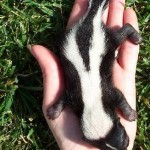As any pet owner will tell you, lots of non-human animals have their own personalities. Even within the same species, individual animals can have specific behavioral traits, such as tendency to be shy or playful. In the case of zoo animals, knowing a creature’s personality could help zoo keepers improve its well-being in captivity and may even increase the odds of successful breeding programs.
In a March 31 article in Zoo Biology online, researchers present the results of two personality tests on a group of snow leopards in the Bronx Zoo. In one study, “the novel-object test,” the researchers watched as each of nine snow leopards reacted to an unknown item in their enclosure. The researchers placed items like a piece of plastic piping, a round buoy or a plastic planter in an unoccupied enclosure, and then gave the cat free rein to explore.
The researchers then scored how often the cats visited the object and whether they walked, ran, or laid around their enclosure, among other feline activities. Male cats tended to visit the object more often than females, scent marked more and exhibited more exploratory behaviors. As noted by the researchers, these male traits fit with known snow leopard biology. In the wild, males have larger stomping grounds than females and they compete with other males for territory and breeding.
The researchers also asked the eight zookeepers that care of the Bronx Zoo’s snow leopards to fill out surveys about each feline’s personality. The keepers answered questions about 21 personality points, looking at traits like “vigilant,” “calm,” “friendly” and “tense.”
In general, the zookeepers tended to agree with one another– that is, if one zookeeper thought a particular leopard was shy and anxious, then so did another keeper. The keepers assessed the personalities of 11 leopards that ranged in age from 2 to 19. While the age and sex of each cat clearly shaped its personality, the researchers saw individual differences in cats of the same age and/or sex. For example, between the two two-year-old female snow leopards, Misty and Mina, Mina scored much lower on the “anxious/timid” scale than Misty.
A few of the traits in the zookeepers’ snow leopard personality tests consistently matched up with each cat’s responses to the novel objects. The authors suggest that the quicker novel-object test could be used to determine a leopard’s disposition when isn’t feasible for zookeepers to conduct a personality survey.
Bonus Kitteh Vocab: The Flehmen Response. Have you ever seen your cat make the “stinky face?” That’s when kitty leaves her mouth hanging open, perhaps baring her teeth a bit and stretching out her neck, while sniffing around your old shoes or a patch of grass. The scientific name for “stinky face” is the Flehmen Response, or Flehmening. Flehmening gets more odor molecules into the vomeronasal organ, a structure in the roof of kitty’s mouth that detects pheromones and other odorants. In the snow leopard study, the scientists watched for Flehmening while the leopards explored the novel objects placed in their enclosure.
Just in case you’ve never seen a “stinky face”:
References:
1) Gartner MC and Powell D. “Personality assessment in snow leopards (Uncia uncia).” Zoo Biology, 31 Mar 2011.
2) Réale D “Evolutionary and ecological approaches to the study of personality.” Phil. Trans. R. Soc. B. 2010
3) Wells V. “Why do Cats Make a Funny Face?” ThePetPlace.com









Comments are closed.